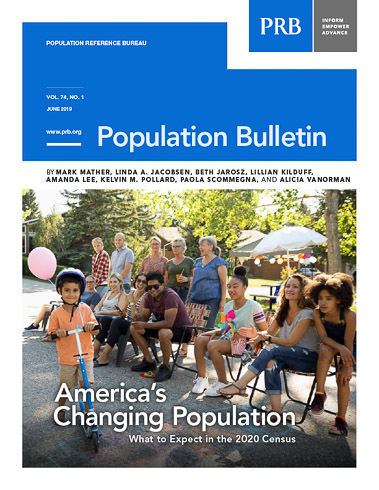What to Expect in the 2020 Census. This Bulletin provides a preview of 2020 Census results—identified through data from surveys, population estimates, and projections—and an overview of key population and housing trends that will shape the United States in 2020 and beyond.
Executive Summary:
April 1, 2020 is Census Day. The U.S. Constitution mandates that a census be taken every 10 years to count all people—both citizens and noncitizens—living in the United States.1
An accurate count of the population is both required by law and serves as the basis for fair political representation, and it plays a vital role in many areas of public life.
- State population counts from the census are used to reapportion seats in the U.S. House of Representatives across the 50 states.
- State and local officials use census results to help redraw congressional, state, and local district boundaries to meet the one-person, one-vote rule.
- Governments and nonprofit organizations rely on census data to determine the need for new roads, hospitals, schools, and other public sector investments. Census data are also vital to businesses as a key source of information about the changing needs of the U.S. population.
- Census data are used to distribute more than $675 billion in federal funds to states and local communities for health, education, housing, and infrastructure programs.2
This Bulletin provides a preview of 2020 Census results—identified through data from surveys, population estimates, and projections—and an overview of key population and housing trends that will shape the United States in 2020 and beyond.
Among the key findings:
- The U.S. population is on track to grow at the slowest rate since the 1930s, which could have wide-ranging impacts on the labor supply and the demand for goods and services, including new homes, over the coming years.
- As the U.S. population continues to shift to the South and West, states in those regions are expected to gain congressional seats at the expense of states in the Northeast and Midwest.
- More than half of U.S. counties have experienced net population loss since 2010, with more than 550 counties losing at least 5 percent of their residents.
- The percentage of U.S. residents ages 65 and older is increasing at the fastest pace in U.S. history, with significant implications for public spending on programs for older adults.
- Children are at the forefront of racial/ethnic change in the United States, creating a diversity gap
among generations. - Fewer households are being established, due in part to the growing share of young adults who still live with their parents.
- A growing divide in homeownership rates between whites and blacks is increasing the wealth gap between racial/ethnic groups.April 1, 2020 is Census Day. The U.S. Constitution mandates that a census be taken every 10 years to count all people—both citizens and noncitizens—living in the United States.
Many of these trends will have immediate implications for public spending, nonprofit planning, and business decisionmaking. Other trends are reshaping the composition of our population and households in ways that will continue to unfold for decades to come.
The census is our best—and only—source of accurate population and housing counts for the nation, states, and small geographic areas, enabling communities, government, businesses, and nonprofit organizations to adapt to the challenges ahead.
References
1National Archives, “The Constitution of the United States: A Transcription,” accessed at www.archives.gov/founding-docs/constitution-transcript, on Feb. 22, 2019.
2Marisa Hotchkiss and Jessica Phelan, Uses of Census Bureau Data in Federal Funds Distribution (Washington, DC: U.S. Census Bureau, 2017).
About this Series
Population Bulletins are a signature PRB product that distill complex demographic data and social science research to provide the most objective and accurate population information in an accessible format useful to researchers, advocates, journalists, government decisionmakers, and others.


 ">
">




